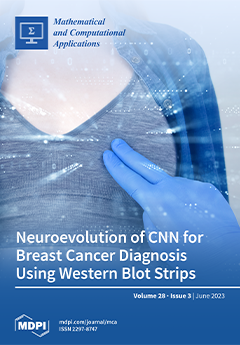Binocular rivalry is the perceptual dominance of one visual stimulus over another. Conventionally, binocular rivalry is induced using a mirror-stereoscope—a setup involving mirrors oriented at an angle to a display. The respective mirror planes fuse competing visual stimuli in the observer’s visual field
[...] Read more.
Binocular rivalry is the perceptual dominance of one visual stimulus over another. Conventionally, binocular rivalry is induced using a mirror-stereoscope—a setup involving mirrors oriented at an angle to a display. The respective mirror planes fuse competing visual stimuli in the observer’s visual field by projecting the stimuli through the stereoscope to the observed visual field. Since virtual-reality head-mounted displays fuse dichoptic vision in a similar way, and since virtual-reality head-mounted displays are more versatile and more readily available than mirror stereoscopes, this study investigated the efficacy of using a virtual-reality headset (Oculus Rift-S) as an alternative to using a mirror stereoscope to study binocular rivalry. To evaluate the validity of using virtual-reality headsets to induce visual dominance/suppression, two identical experimental sequences—one using a conventional mirror stereoscope and one using a virtual-reality headset—were compared and evaluated. The study used Gabor patches at different orientations to induce binocular rivalry and to evaluate the efficacy of the two experiments. Participants were asked to record all instances of perceptual dominance (complete suppression) and non-dominance (incomplete suppression). Independent sample
t-tests confirmed that binocular rivalry with stable vergence was successfully induced for the mirror-stereoscope experiment (t = −4.86;
p ≤ 0.0001) and the virtual-reality experiment (t = −9.41;
p ≤ 0.0001). Using ANOVA to compare Gabor patch pairs of gratings at +45°/−45° orientations presented in both visual fields, gratings at 0°/90° orientations presented in both visual fields, and mixed gratings (i.e., unconventional grating pairs) presented in both visual fields, the performance of the two experiments was evaluated by comparing observation duration in seconds (F = 0.12;
p = 0.91) and the alternation rate per trial (F = 8.1;
p = 0.0005). The differences between the stimulus groups were not statistically significant for the observation duration but were significantly different based on the alternation rates per trial. Moreover, ANOVA also showed that the dominance durations (F = 114.1;
p < 0.0001) and the alternation rates (F = 91.6;
p < 0.0001) per trial were significantly different between the mirror-stereoscope and the virtual-reality experiments, with the virtual-reality experiment showing an increase in alternation rate and a decrease in observation duration. The study was able to show that a virtual-reality head-mounted display can be used as an effective and novel alternative to induce binocular rivalry, but there were some differences in visual bi-stability between the two methods. This paper discusses the experimental measures taken to minimise piecemeal rivalry and to evaluate perceptual dominance between the two experimental designs.
Full article





